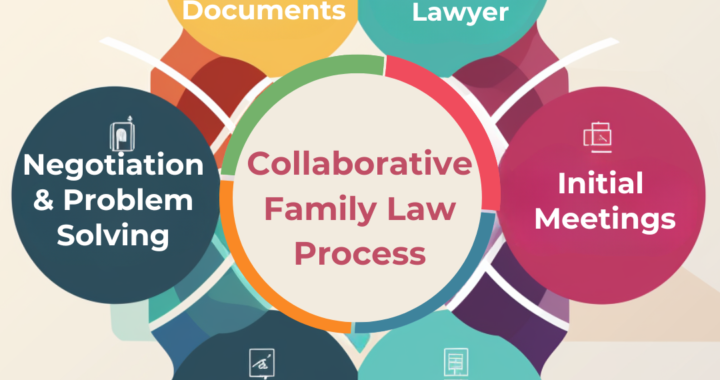Collaborative Practice is an alternative dispute resolution process that aims to help couples separate amicably and to settle their property and parenting issues without resorting to litigation.
Here’s the step-by-step process for a collaborative settlement:
1. Research and Educate Yourself
Understanding what collaborative practice entails and whether it is suitable for your situation is the first step. Gather information about the process, its benefits and the professionals involved. You will find lots of helpful information on our website for Southern Sydney Collaborative Professionals http://southernsydney.wpenginepowered.com
2. Consult with a Collaboratively Trained Lawyer
Each spouse should select and consult with their own collaboratively trained family lawyer. These lawyers are trained to work together focusing on problem solving rather than adversary tactics. Your collaborative lawyer will also provide you with the necessary legal advice to ensure that you can negotiate a fair and reasonable agreement that recognises your own interests and goals.
3. Select A Collaborative Coach/Facilitator
Your Family Law solicitor will assist you in selecting a coach for your matter. A Collaborative Coach is a neutral third party that facilitates the settlement process. The coach will direct and guide you and your partner and the respective lawyers through the process, while ensuring everyone adheres to the joint objectives.
4. Initial Meetings
Both spouses, their lawyers and the collaborative coach meet together in a series of joint sessions. The primary goal of the first meeting is to establish open communication, set expectations and discuss the overall settlement process. A Participation Agreement is prepared and signed by all persons. The Participation Agreement ensures commitment by the parties and their lawyers to resolve the family law issues without court proceedings.
5. Disclosure of Information
Both parties voluntarily provide all relevant financial and personal information. Transparency is crucial to ensure fairness in property division, spousal support and child related matters.
6. Team Building
Depending on the complexity of the case, the collaborative team may include other professionals. For example, this may be financial specialists such as financial planners, accountants and valuers. You may also include mental health professionals and child specialists where relevant. These experts help promote open discussion to provide comprehensive solutions to the various issues that are concerning the parties and their children.
7. Negotiation and Problem Solving
During the joint sessions the spouses, the coach and their collaborative team work together to identify issues and find mutually acceptable solutions. Discussion will cover all aspects that are of concern to the parties from any urgent initial issues (such as the initial living arrangements for the children, the payment of the mortgage and bills and access to bank accounts) through to the final property division, parenting arrangements, spouse maintenance and child support.
8. Drafting the Settlement Documents
Once both parties reach agreement on all issues, the lawyers will draft the comprehensive settlement documents setting out clearly all the agreed terms that the parties have achieved. These can be drafted as parenting or property Orders which will be made by the court, or a Financial Agreement under the Family Law Act. The documents may also include Child Support Agreements, Spouse Maintenance Agreements and Parenting Plans.
9. Finalising the agreements
Once both parties are satisfied with the settlement terms, they sign all the documents along with their lawyers. These documents will then become legally binding agreements reflecting their mutual decisions and intentions. If Orders are to be made, then an Application for Consent Orders is completed and filed with the court. This does not require any court attendance, but once approved by the court the agreement becomes legally binding and enforceable.
Remember that the collaborative family law process relies heavily on open communication, respect and a willingness to compromise. Unfortunately, there may be a few cases where the collaborative process breaks down and the parties cannot come to an agreement. Both parties will then typically need to hire new lawyers to proceed to litigation in Court.
It is therefore essential for parties to choose professionals experienced in collaborative law and to maintain a cooperative mindset throughout the process so as to reap the benefits of a collaborative practice settlement.

